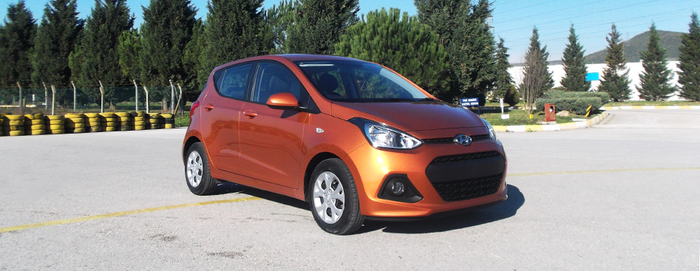Hyundai i10

This is not the first time we have seen or driven the all new i10. We saw it very briefly in Frankfurt, a few weeks ago. But in Turkey we drove the first right hand drive cars that were fresh off the production line.
We were given some background information on the home of the new i10. The Hyundai plant in Turkey was completed in 1997 and can produce up to 200,000 units per year. Turkey has a population of around 75.6 million and an area of 783,562 square kilometres. It has many borders, including those with Georgia, Armenia, Iran, Iraq and Syria. The plant is jointly owned by Hyundai Motors (70%) and a local company called Kibar Holdings and employs around 1,800 people.

The previous i10 was built in India but Hyundai decided to move European production closer to the markets and this well established plant in Turkey was chosen. Production of right hand drive i20 will also move from India to Turkey next year.
This new small A-Sector five-door hatch will be available with two petrol engines: 1.0 3 cylinder that produces 66ps and has Co2 emissions from 108g/km, although there is a BlueDrive version with just two rear seats and this has a Co2 rating of 98g/km. The other unit is a 4 cylinder that produces 87ps and will have the option of a 4 speed automatic gearbox too. As a manual it produces a Co2 figure of 114g/km and as an automatic this rises to 142g/km. We drove cars with both power plants and found them both to be quiet with plenty of power, even the 1.0 litre did not struggle with a quicker than expected get away, it is a lively little thing.
Hyundai have worked magic on the interior and is up to a high quality throughout; all the plastics look and feel very good, the switches, levers and buttons are all more German premium than a small Korean. The seat material and dash finish are much more akin to a larger cars quality and not a small runabout. The designers have also been clever in hiding most of the metal work in the cabin, with hardly any on show, except for a small amount around the doorframes. They have also added a two tone dashboard for everything other than the base version, which also adds to the premium feel.

We did not get chance to drive the cars very far but the short journey we did, proved that this is a very capable small hatch, with a huge almost unbelievable improvement on the current car. It is worlds apart in terms of styling, quality, comfort and driveability. The cabin is exceptionally quiet, with hardly any road, wind or engine noise intrusion.
Comfort and passenger space has also been improved with plenty of room for two large adults or three children in the rear seat, with the exception of the Blue Drive which as mentioned earlier, only has two rear seats. But getting three adults in for any length of time might just be a bit of a squeeze and a bit cramped. The luggage area is 252 litres with the rear seats up and goes up to 1046 litres with them folded down.
It is a pretty little car but can be colour sensitive, the silver car we saw did not look as good or stylish as the brighter colours such as the metallic blue or orange. But the i10 does look good from every angle and has certainly been designed with Europe in mind, unlike the current i10 that was aimed at the world market and in particular markets in Asia, such as India.
We watched many cars being built during the couple of hours we spent in the factory and every car is assembled to an exacting standard, everyone must be 100% accurate and many are taken off the line at random for checking by laser measurement to ensure it has been built to Hyundai’s critical engineering standards.

The models available when it arrives in the UK early January will be: S, S AIR, SE, SE Blue Drive (98g/km) and the Premium, with prices ranging from £8,345 to £10,495 and insurance group ratings will be as low as group 1, which in part has been achieved as a result of it having many standard safety features, such as electronic stability control and curtain air bags.
Hyundai UK expect to sell around 21,000 each year in the UK with 90% of them being manual and 67% being the 1.0-litre.
The new i10 is a great little car, fun to drive and will appeal to a new, younger audience when compared to the current car, with its ‘boxy’ shape and very little style or character. But the current car has sold in good numbers and is very reliable and economical. The new one adds a new dimension and is now a sound proposition in the highly competitive A-Segment. But this now means the i10 is going have to go into battle with other very good small cars such as the Ford KA, Peugeot 107, Citroen C1, Toyota Aygo, VW UP, Skoda Citigo and SEAT Mii. It should win some customers over from these other well tried and tested small hatches.
Martin Ward, Manufacturer Relationship Manager
Istanbul


